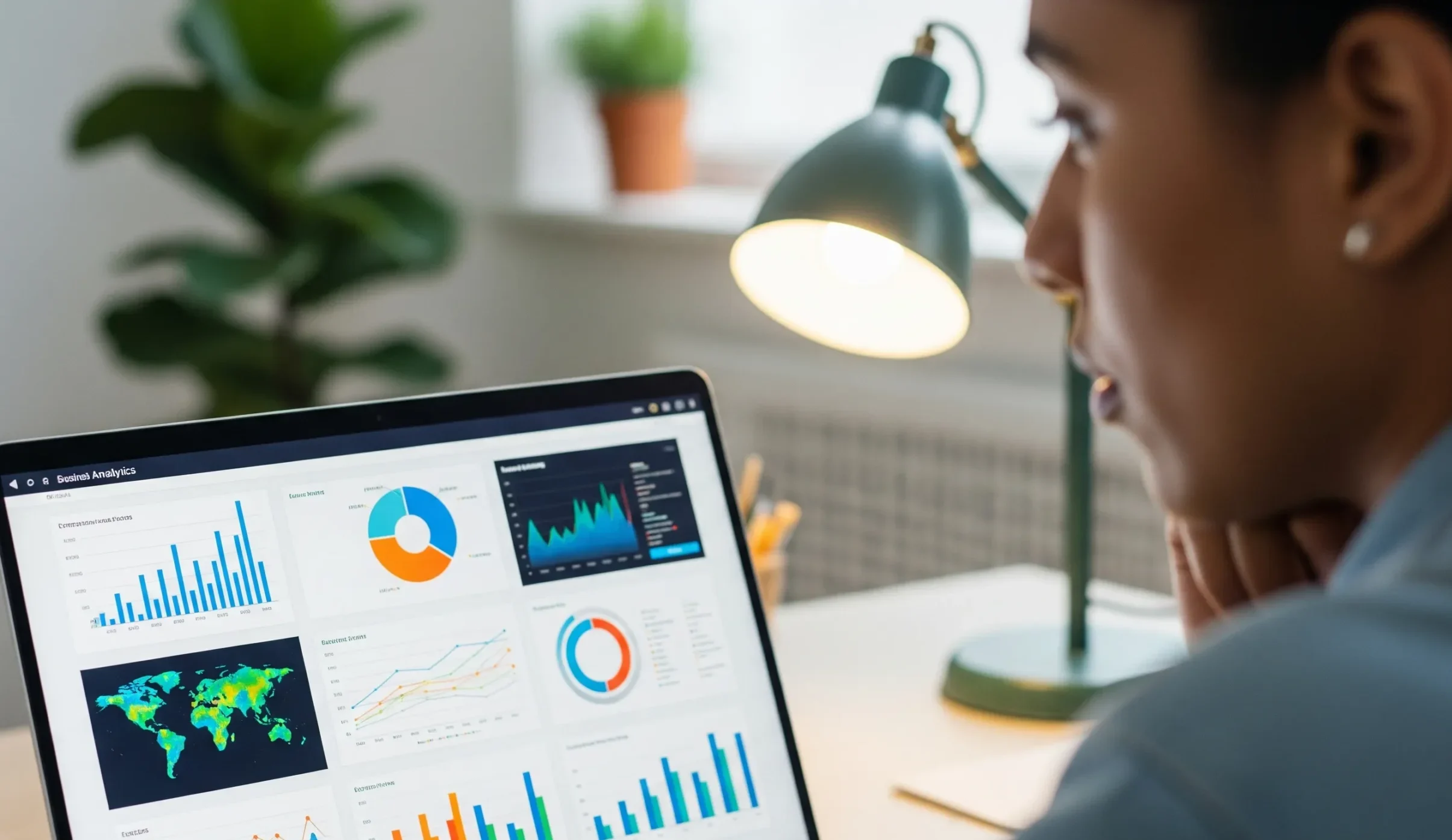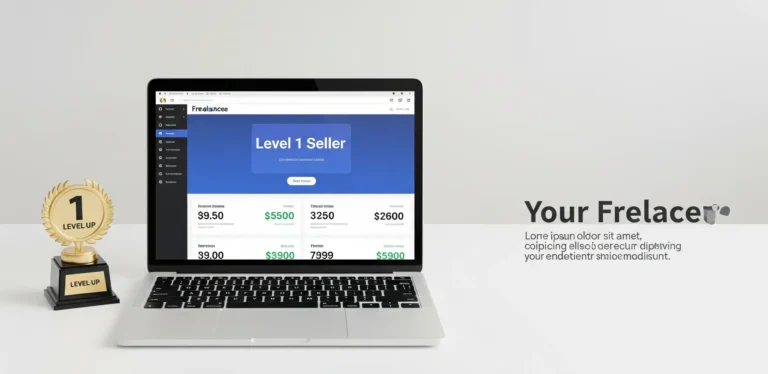Fiverr Analytics Explained: A Guide to Rank & Boost Sales
So, you’ve set up your Fiverr gigs, polished your profile, and you’re ready for the orders to roll in. But then you’re faced with a screen full of charts, graphs, and numbers. It’s the Fiverr Analytics page, and let’s be honest, it can feel a little intimidating at first. What do all these metrics mean? And more importantly, how can you use them to actually make more money?
Don’t worry, you’re in the right place. Think of your analytics dashboard not as a test, but as a treasure map. Every number, from impressions to your conversion rate, is a clue leading you toward more orders, bigger earnings, and top-rated status.
This guide will break down everything you need to know. We’ll demystify the Fiverr seller dashboard, decode your Fiverr gig performance, and show you exactly how to track Fiverr earnings like a pro. By the end, you’ll understand the crucial difference between Fiverr impressions vs clicks and have a clear action plan to turn data into dollars.
Your Command Center: The Fiverr Seller Dashboard
The first thing you see when you log in as a seller is your main dashboard. It’s your high-level overview, a quick snapshot of your business’s health. It shows your active orders, new messages, response rate, and your current seller level.
While this page is great for day-to-day management, the real magic happens when you click on the “Analytics” tab. This is where we’ll spend most of our time. The overview page here gives you a 30-day summary of your earnings, completed orders, and your average selling price.
Pro Tip: Don’t just glance at these numbers. Track them week-over-week. Is your average selling price going up? That’s great! If it’s dropping, it might be time to re-evaluate your pricing or focus on upselling your gig extras.
Decoding Your Fiverr Gig Performance: The Metrics That Matter
This is the heart of your analytics. Understanding your gig performance is non-negotiable if you want to succeed. Let’s break down the key terms you’ll see.
Impressions: Getting Seen in the Crowd
- What it is: An impression is counted every time your gig thumbnail appears in Fiverr’s search results, category pages, or on the homepage. Someone scrolled past your gig? That’s an impression.
- Why it matters: Impressions are the top of your sales funnel. If you have zero impressions, you have zero chance of getting an order. Low impressions mean your gig isn’t visible enough.
- How to improve it:
- Keyword Research: Are you using the terms buyers are actually searching for? Use Fiverr’s search bar to see what auto-populates. Look at the tags successful sellers in your niche are using.
- Niche Down: Instead of “logo design,” try “minimalist logo design for tech startups.” Being specific can help you show up in more relevant, less competitive searches.
- Stay Active: Regularly logging into Fiverr and delivering orders on time can signal to the algorithm that you’re an active and reliable seller, potentially boosting your visibility.
Clicks: Turning Eyeballs into Interest
- What it is: A click is counted when a potential buyer is interested enough by your thumbnail and title to click on your gig to learn more.
- Why it matters: Clicks are proof that your initial pitch—your gig image and title—is working. It shows you’re grabbing attention. If you have high impressions but low clicks, it’s a major red flag that your gig’s “first impression” isn’t compelling enough.
- How to improve it:
- A/B Test Your Gig Image: Your gig image is your #1 marketing tool. It needs to be professional, clear, and stand out. Try different designs. Use a clean photo of yourself if it’s a personal service. For design gigs, showcase your best work.
- Craft a Killer Title: Your title should be clear, concise, and include your main keyword. Instead of “I will do writing,” try “I will write SEO-optimized blog posts for your business.”
Click-Through Rate (CTR): The Golden Ratio
Here’s where we connect Fiverr impressions vs clicks. Your Click-Through Rate, or CTR, is the percentage of people who clicked on your gig after seeing it.
The formula is simple:
CTR=(Clicks/Impressions)×100%
For example, if your gig had 1,000 impressions and 50 clicks, your CTR would be 5%.
- Why it matters: CTR is perhaps the most important metric for diagnosing the health of your gig’s visibility. A low CTR (generally below 2-3%) with high impressions tells you that people are seeing your gig, but they aren’t interested enough to click. This points directly to a problem with your gig image or title.
- What’s a good CTR? This varies by niche, but anything over 5% is generally considered good. A CTR of 10% or higher is excellent and suggests your gig is highly appealing to your target audience.
Orders & Conversion Rate: Sealing the Deal
- What it is: This is the number of orders you received from people who clicked on your gig. The Conversion Rate is the percentage of clicks that turned into an order.
- The formula: ConversionRate=(Orders/Clicks)×100%
- Why it matters: This tells you how effective your gig page is at selling your service. You can get all the clicks in the world, but if no one is buying, you have a problem.
- How to improve it:
- Strengthen Your Description: Is your description clear? Does it address the buyer’s pain points and explain how you can solve them? Use bullet points and bold text to make it easy to read.
- Optimize Your Packages: Are your pricing tiers logical? Do they offer clear value? Make sure your Basic, Standard, and Premium packages make sense and encourage buyers to upgrade.
- Showcase Social Proof: Your reviews are everything. A page full of 5-star reviews is the best sales tool you have.
- Improve Your FAQ: Anticipate buyer questions and answer them in your FAQ section. This can reduce friction and build trust.
How to Track Fiverr Earnings and Understand Your Revenue
The “Earnings” tab in your analytics provides a clear breakdown of where your money is coming from. Here, you can track Fiverr earnings over different time periods, see your average selling price, and view a list of all your completed orders.
- Net Income: This is the amount you’ve earned after Fiverr’s 20% platform fee.
- Withdrawn: The amount you have successfully transferred to your bank or PayPal.
- Pending Clearance: Earnings from recently completed orders that are not yet available for withdrawal (this period is typically 14 days for most sellers).
- Available for Withdrawal: The funds you can transfer right now.
Use this page to spot trends. Is your revenue growing month-over-month? Are most of your earnings coming from one particular gig? This data can help you decide which gigs to promote more heavily and which ones might need to be revamped or retired.
A Backlink Strategy for Fiverr Sellers?
While you can’t build traditional backlinks to your Fiverr gig page, you can apply the same principle: get your gig in front of people on other platforms.
- Share on Social Media: Share your gig on LinkedIn, Twitter, or in relevant Facebook groups (where permitted). Talk about a project you just completed (with client permission) and link back to your gig.
- Personal Blog or Portfolio: If you have a personal website, create a “Hire Me” page that links directly to your Fiverr profile. This not only drives traffic but also shows a higher level of professionalism. Referencing authoritative sites like a business resource (e.g., mentioning you follow best practices from HubSpot‘s blog) in your own portfolio content can also build credibility.
- Guest Posting: Write a guest post for a blog in your niche. In your author bio, you can link to your Fiverr profile. This is an excellent way to get in front of a new, relevant audience.
By understanding and acting on the data in your Fiverr analytics, you stop guessing and start making strategic decisions. You move from being a passive seller hoping for orders to an active entrepreneur building a real business. So go ahead, dive into your dashboard, and start turning those numbers into your success story.



